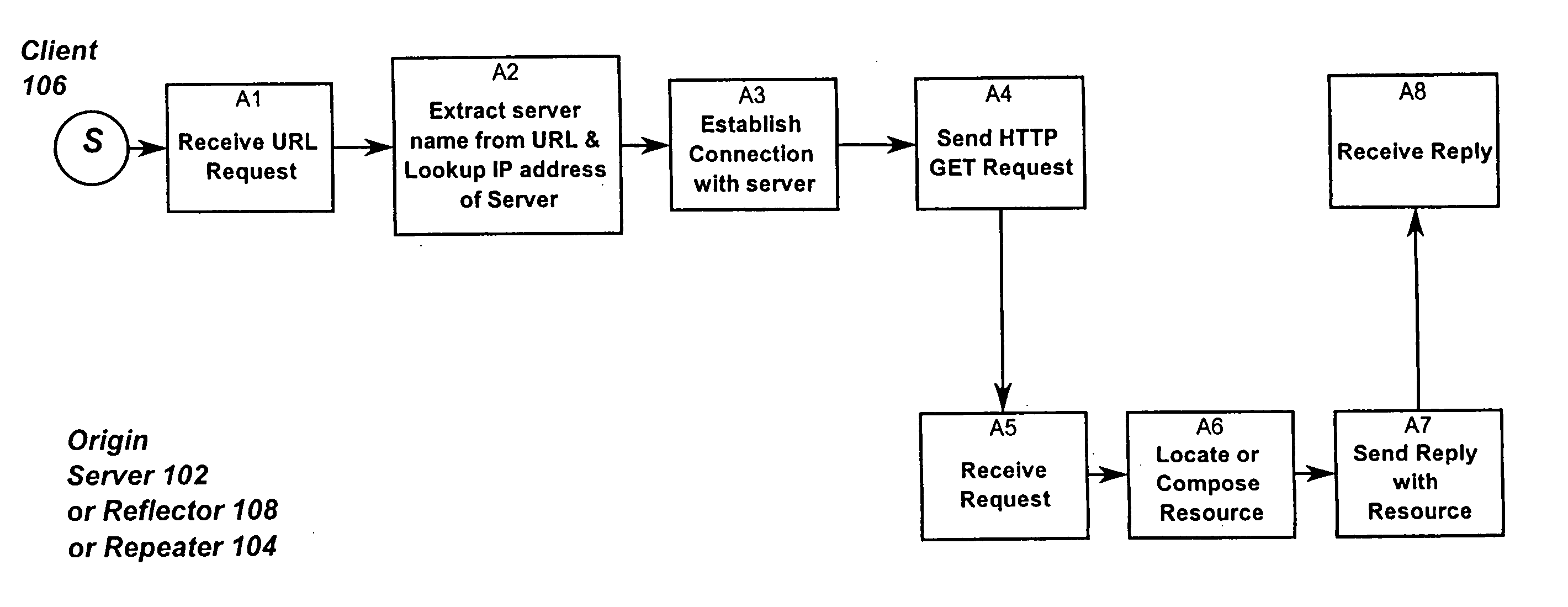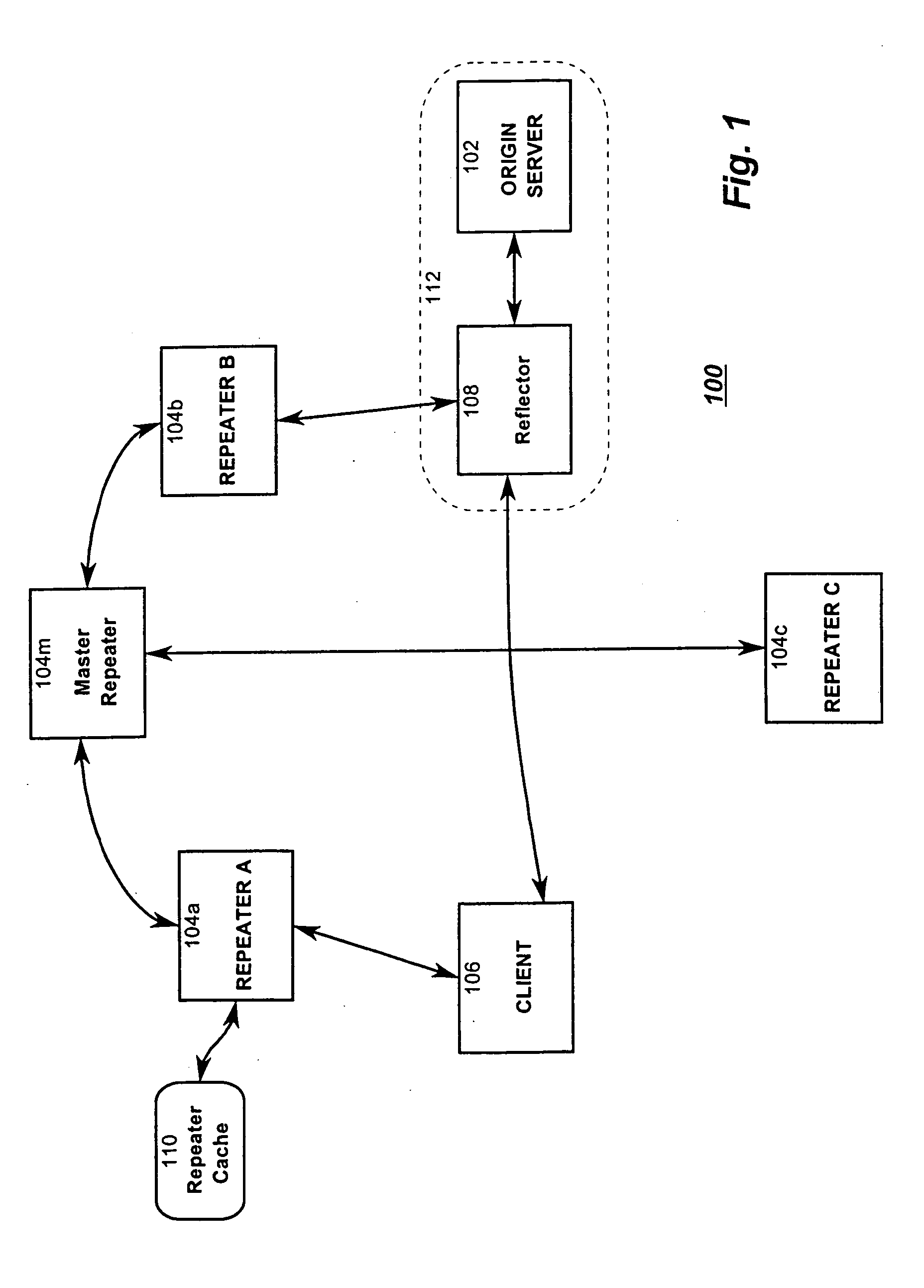Optimized network resource location
a network resource and location technology, applied in the field of computer network replication, can solve the problems of imposing a heavy traffic burden on the entire network, increasing the strain on the supply, and further exacerbated the problem, and achieve the effect of low cos
- Summary
- Abstract
- Description
- Claims
- Application Information
AI Technical Summary
Problems solved by technology
Method used
Image
Examples
Embodiment Construction
[0030] Overview
[0031]FIG. 1 shows a portion of a network environment 100 according to the present invention, wherein a mechanism (reflector 108, described in detail below) at a server herein origin server 102) maintains and keeps track of a number of partially replicated servers or repeaters 104a, 104b, and 104c. Each repeater 104a, 104b, and 104c replicates some or all of the information available on the origin server 102 as well as information available on other origin servers in the network 100. Reflector 108 is connected to a particular repeater known as its “contact” repeater (“Repeater B”104b in the system depicted in FIG. 1). Preferably each reflector maintains a connection with a single repeater known as its contact, and each repeater maintains a connection with a special repeater known as its master repeater (e.g., repeater 104m for repeaters 104a, 104b and 104c in FIG. 1).
[0032] Thus, a repeater can be considered as a dedicated proxy server that maintains a partial or sp...
PUM
 Login to View More
Login to View More Abstract
Description
Claims
Application Information
 Login to View More
Login to View More - R&D
- Intellectual Property
- Life Sciences
- Materials
- Tech Scout
- Unparalleled Data Quality
- Higher Quality Content
- 60% Fewer Hallucinations
Browse by: Latest US Patents, China's latest patents, Technical Efficacy Thesaurus, Application Domain, Technology Topic, Popular Technical Reports.
© 2025 PatSnap. All rights reserved.Legal|Privacy policy|Modern Slavery Act Transparency Statement|Sitemap|About US| Contact US: help@patsnap.com



